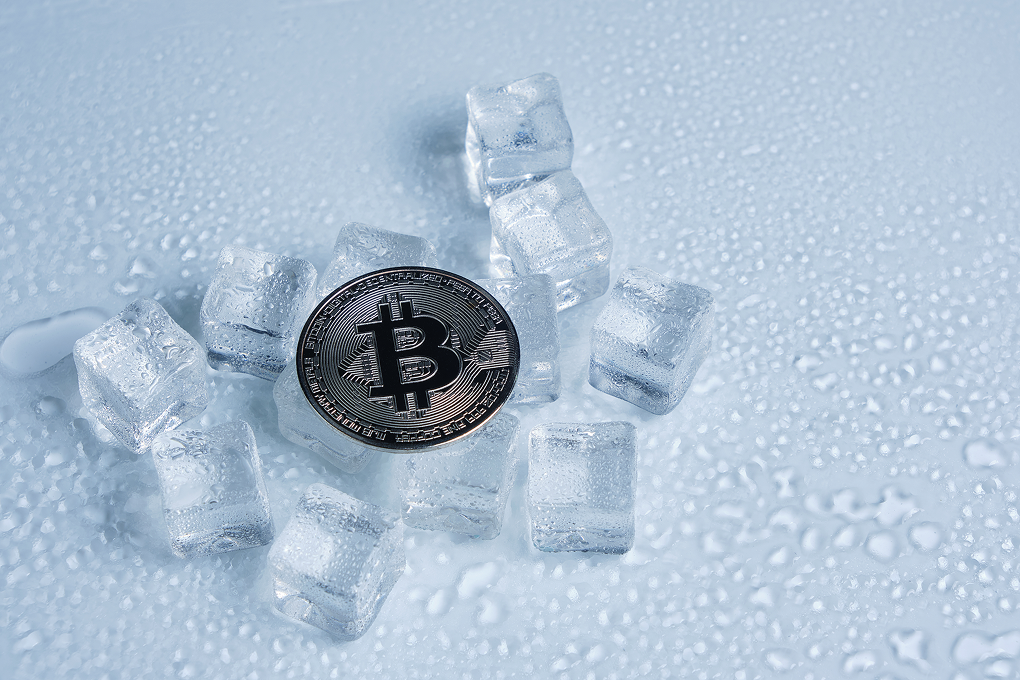When working with cryptocurrency, it is extremely important to understand the difference between hot and cold wallets, as this choice directly affects the security and availability of your digital assets. They are great for everyday operations, cryptocurrency trading and exchange, but it is the network connection that makes them more vulnerable to cyberattacks.
Cold wallets, on the contrary, store cryptocurrency offline – on hardware devices or paper media. This approach significantly increases the level of protection and reduces the risk of hacking, but asset management becomes less operational.
In this article, we will take a detailed look at the key differences between hot and cold wallets, as well as explain how to properly integrate each type of storage into your overall cryptocurrency strategy.
What Is a Wallet?
A cryptocurrency wallet doesn’t store coins—it stores keys. Your crypto lives on the blockchain, not in an app or device. The wallet holds your private keys, which prove that you own the coins tied to a blockchain address. Think of it as a digital keyring. Without these keys, you can’t access or transfer your crypto.
Crypto wallets come in many forms—hot wallets (connected to the internet) and cold wallets (offline). Both types manage your public and private keys, allowing you to send and receive coins securely. When you set up a wallet, you’re given a private key (your access) and a public key (your address).
Losing your private key means losing access to your crypto. That’s why choosing between a cold wallet vs hot wallet matters. Wallet security is key to protecting your digital assets—whether you use an app, USB device, or even a printed sheet of paper.
Understanding Hot Wallets
A hot wallet, or software wallet, is always connected to the Internet. It can be installed on a smartphone, computer or used as a browser extension. Such a wallet is convenient for those who often transfer or trade cryptocurrency, because access to funds is carried out literally in a couple of clicks.
The configuration is also simple: when creating a wallet, an initial phrase and private keys are generated, which are stored online and allow you to restore access if the device is lost. The main advantages of hot wallets are speed and convenience, which is why they are loved by both beginners and active traders.
However, a constant connection to the Internet makes hot wallets more vulnerable to cyber threats and hack attacks. Private keys stored online can be subjected not only to hacking but also to phishing attacks or unauthorised access to wallets. If the key is compromised, the attacker gets instant access to your funds, in such cases, for the safety of users, experts do not recommend storing large amounts of cryptocurrency in hot wallets.
Hot wallets are free, quickly customisable and support many cryptocurrencies. But when choosing between a hot and cold wallet, it is important to consider the compromise between convenience and security. Hot wallets are great for small amounts and daily transactions, while cold wallets are best used for long-term storage of large assets, when the priority is maximum protection of funds.

Understanding Cold Wallets
A cold wallet is a way to store cryptocurrency in which your personal keys are completely isolated from the Internet. Unlike hot wallets constantly connected to the network, cold solutions hold keys on physical media or in printed form, which makes them much less vulnerable to hacker attacks. Cold wallets include hardware and paper options, ideal for safe long-term storage of large amounts of cryptocurrency.
A hardware wallet is a compact electronic device that securely stores your personal keys, providing a high level of security for any operations. It stays offline by default, and even when plugged into a computer, the keys never leave the device. Paper wallets are even simpler—they are pieces of paper that display both a public wallet address and a private key, often in the form of QR codes. Both options protect your keys from online threats.
Using a cold wallet requires a little more steps than working with a hot wallet, but this is what gives it reliability. First, you prepare the transaction online, as usual. After that, the transaction is signed using a cold wallet completely disconnected from the network. And only after that the signed transaction is loaded back into the blockchain for processing. This additional stage provides a high level of protection for your funds, reducing the risk of cyberattacks, although it makes the process a little more complicated.
Cold wallets offer high protection but are not practical for frequent use. They are better suited for storing crypto you don’t need to access often. While they support fewer cryptocurrencies than most hot wallets and usually cost money to buy, they are considered one of the safest storage options available.
When comparing a cold wallet vs hot wallet crypto solution, cold wallets focus on maximum security while sacrificing some convenience. This makes them the preferred choice for holding long-term investments, not daily transactions.
Types of Hot Wallets
- Online Wallets (Web Wallets)
Accessed through a browser, usually tied to exchanges. It is easy to set up but managed by third parties, making them vulnerable to hacks and outages. - Mobile Wallets (App Wallets)
Installed on smartphones. Convenient for daily use and scanning QR codes, but reliant on the phone’s overall security. - Desktop Wallets (PC Wallets)
Software downloaded to a desktop or laptop. Offers more control than web wallets but remains exposed to malware if the device is compromised. - Browser Extension Wallets (Extension Wallets)
Add-ons within browsers that allow easy interaction with dApps and Web3 sites. Practical but risky if the browser is insecure. - Exchange Wallets (Custodial Wallets)
Provided by crypto exchanges. Convenient for frequent trading but users don’t control private keys, making them less secure for long-term storage.
Types of Cold Wallets
- Paper Wallets (Print Wallets)
Physical printouts of public/private keys, often with QR codes. Totally offline but must be protected from physical loss or damage. - Hardware Wallets (Device Wallets)
USB-like devices that store keys securely offline. Protected by PINs and resistant even on infected computers. Ideal for large holdings. - Steel Wallets (Metal Wallets)
Stainless steel plates with engraved or stamped keys. Durable and disaster-proof, used as physical backups. - Crypto Paper Banknotes (Note Wallets)
Look like cash, with printed public/private keys—often hidden by scratch-off layers. Serve as a portable offline solution. - Deep Cold Storage (Vault Storage)
Keys stored in secure physical locations like safes or vaults. Used by institutions to store large sums offline with no digital access. - Time-Locked Wallets (Timed Wallets)
Wallets programmed to restrict withdrawals for a set period. Adds a delay buffer against unauthorized access or impulse actions. - Multi-Signature Cold Wallets (Offline Multisig)
Require multiple approvals for a transaction. At least one signer stays offline for added protection—used for joint custody or institutional control.
Hot Wallet vs. Cold Wallet: Key Differences
When it comes to storing cryptocurrency, users are most often faced with a choice between hot and cold wallets. The main difference between them is the way they connect to the network. Hot wallets are constantly online, which makes them convenient for instant transactions and everyday use. At the same time, cold wallets work completely autonomously, remaining outside the Internet zone, which provides the maximum level of security and protection against cyberattacks.
Security
Hot wallets, while on the Internet, are more susceptible to phishing attacks, malware and other cyber threats. Cold storages isolate private keys from the online environment, which significantly reduces the risk of hacking. That is why large investors and organisations are more likely to prefer cold solutions.
Convenience and speed of access
Hot wallets win in terms of comfort: through a mobile application or browser extension you can send or receive funds in a matter of seconds. Unlike them, cold devices require physical connection and manual signing of transactions – it takes longer, but gives an additional level of security.
Recovery and backup
Both types of wallets depend on seed phrases and backup keys. However, it is important to be especially careful with cold storage: the loss of a device without a backup can mean the loss of access to assets.
Cost
Hot wallets are most often free and easy to set up. Cold solutions require the purchase of equipment, the cost of which varies from $50 to $200 and above.
User profile
Novice users and those who often make transactions choose hot wallets for their simplicity. More experienced investors and institutional clients are inclined to cold options, appreciating their reliability when storing large amounts.
Asset support
Hot wallets usually support a wide list of tokens and networks. Cold solutions are usually focussed on the main cryptocurrencies – Bitcoin, Ethereum and key stablecoins.
The choice between hot and cold wallets depends on how you plan to use cryptocurrency. Hot wallets provide instant access and make it easy to make everyday transactions. At the same time, cold wallets are completely isolated from the network, which guarantees maximum protection and is suitable for long-term storage of large amounts. Many experienced users choose a combined approach: small amounts are kept in a hot wallet for convenience and speed of operations, and most of the assets are stored in cold storage for reliable protection. This balance allows you to stay mobile and confidently manage security at the same time, reducing the risks of losses and unauthorised access.

Is a cold wallet safer than a hot wallet for storing cryptocurrencies?
Yes, a cold wallet is really considered a safer solution for storing cryptocurrency compared to a hot one. Due to the fact that it is not connected to the Internet, the cold wallet is reliably protected from online threats – hacking, phishing and malware. That is why such devices are ideal for long-term storage and protection of large amounts of digital assets. At the same time, hot wallets are constantly online, which provides convenient access to funds, but makes them more vulnerable to cyberattacks. However, it is important to remember: the use of a cold wallet requires accuracy. The loss of a device or backup keys may result in an irretrievable loss of access to funds. Therefore, for maximum security, owners should store backups in safe places and use cold wallets exclusively for assets that do not require frequent access.
Can I use both a cold wallet and a hot wallet simultaneously?
You can combine the use of cold and hot wallets, benefitting from both sides. This approach is chosen by many cryptocurrency holders, trying to find a balance between security and convenience. Usually, a significant part of the assets is stored in a cold wallet – reliably and in the long term, and a smaller amount is placed in a hot wallet for daily operations, fast transactions, trade or access to DeFi services. This scheme reduces the risk of large losses due to online threats, while maintaining the ability to instantly dispose of funds. As a result, you have more control over assets, and the storage strategy becomes more flexible and adaptable to your tasks.
Best of Both Wallet Worlds?
The optimal cryptocurrency management strategy is often a combination of hot and cold wallets. Hot wallets provide instant access and convenience, which makes them ideal for everyday operations, small transfers and interaction with decentralised applications. At the same time, cold wallets guarantee maximum security: private keys are stored completely autonomously, outside the Internet zone, which makes them a reliable solution for long-term storage and protection of significant amounts. This hybrid approach allows users to be mobile and confident in the safety of their assets at the same time.
Many users are building a multi-level cryptocurrency storage strategy. For example, they conduct active trading through an exchange wallet, daily expenses are made using a mobile wallet, and most of the assets are kept in a hardware wallet. This approach helps to balance risk and convenience, while providing security and flexibility.
Modern practice actively uses a dedicated phone as a mobile cold wallet. Such a device remains completely turned off and disconnected from the network until the funds are transferred, after which it is briefly connected to make a transaction. This approach combines the convenience of mobile access with the high degree of security inherent in cold wallets, giving users maximum control over assets without compromise on protection.
Combining hot and cold storage allows you to benefit from both approaches: quick access for short-term operations and reliable protection for long-term storage. This approach becomes the optimal strategy for cryptocurrency management, risk minimisation and confident control over assets in different use cases.
Conclusion
There’s no one-size-fits-all when it comes to crypto storage. Some days, you need the speed of a hot wallet to jump on a trade. Other times, you just want peace of mind knowing your long-term savings are locked away in cold storage. That’s why many smart investors use both—quick access when they need it, and airtight security when they don’t.
If you’re still figuring out what works best for you, we’ve got your back. Whether you’re setting up your first wallet or planning a secure long-term strategy, we’ll guide you through the process in plain English. No fluff, no jargon, just clear steps to keep your crypto safe and accessible.
So if you would like to get a consultation and want to learn more, just contact us for more.




